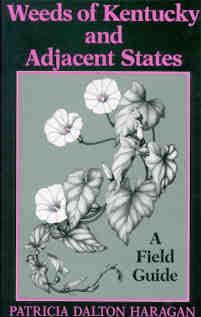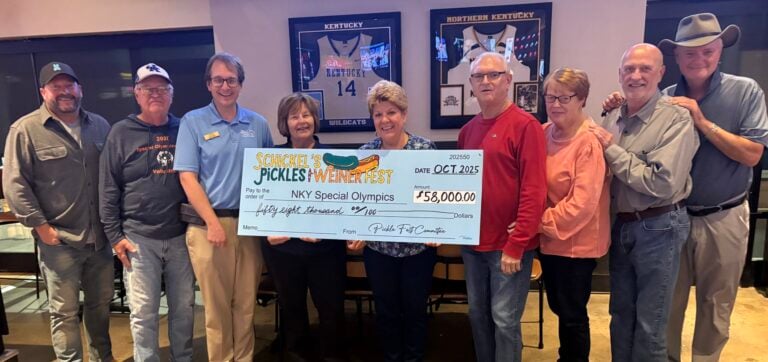Spend time in the outdoors fishing, hunting and enjoying nature and there will be days when something in the environment will be encountered that will pry your curiosity.
The state’s varied landscape and topography is why Kentucky has such an interesting natural history, one that provides a lifetime of study for inquiring minds. Summer is a good time for pleasure reading, while on vacation, or simply enjoying a glass of iced tea on the porch at the end of the day.
Here are three good reads for the naturalist in all of us from The University Press of Kentucky:
Weeds of Kentucky and Adjacent States: A Field Guide (Patricia Dalton Haragan, $25)
This 304-page, 6 by 9-inch illustrated guide helps readers identify 160 weeds commonly found in crops, pastures, turf, and along roadsides. Because of its central location and geographical diversity, Kentucky is home to a vast diversity of plants, and weeds make up a large component of the state’s flora.

Many of Kentucky’s weeds are non-native immigrants that came to the New World from Europe and were brought to Kentucky by travelers, explorers, and settlers.
This book provides ecological and geographical information with each species description. Also includes ethnobotanical information, the relationship between humans and plants, how they were used (food, clothing, medicines and dyes, for example) managed and perceived.
It is the most extensive reference on weeds in this botanically unique area. A must for all agriculturalists, naturalists and botanists.
Author Patricia Dalton Haragan is a former botanist for Louisville Olmsted Parks Conservancy and a former curator of the University of Kentucky College of Agriculture Herbarium.
A companion on a backyard, field or roadside tour for an appreciation of the immense variety and beauty of some of the region’s most common plants.
Woody Plants of Kentucky and Tennessee: The Complete Winter Guide to Their Identification and Use (Ronald L. Jones and B. Eugene Wofford, $45)
Ever pick up an acorn off the forest floor and wonder what species of oak it’s from or encounter a vine or shrub loaded with berries that is unfamiliar?
This 224-page guide helps readers identify all woody plants encountered in woods and fields. This 7 by 10-inch hardcover book has 630 color photos.

Several features in the appendix are especially helpful to readers — a glossary of botanical terms, an index of common names, woody plants useful for food, woody plants with medical properties, fiber for cordage (ropes), and woods considered ideal for making primitive bows and arrows.
The species accounts include useful information on Latin meanings, common names, habitats and distributions, and notes on toxicity, nativity, rarity and wetland status.
Winter identification of woody plants can be a daunting exercise, but Jones and Wofford present clear and authoritative information that can help anyone spot these species in the wild.
This is an excellent resource for professional and amateur botanists, students, commercial landscapers, homeowners, and outdoor enthusiasts by Ronald L. Jones, foundation professor of biological sciences and curator of the herbarium at Eastern Kentucky University, and B. Eugene Wofford, a research professor and director of the herbarium at the University of Tennessee.
Kentucky Agate: State Rock and Mineral Treasure of the Commonwealth (Roland L. McIntosh Warren H. Anderson, $45)
This 224-page, 10 by 8-inch book showcases this rare and prized mineral with 296 color photos. Agate is found in round or spherical geodes, primarily along stream banks. These nodules of quartz are glasslike with banded, variegated or mottled coloring achieved by various minerals. These striking rocks are coveted by collectors and becoming rarer across the globe.
This is the first book about agates hidden away in the rugged terrain of eastern Kentucky’s Knobs Region, in the area surrounding the city of Irvine, Kentucky, including parts of Estill, Powell, Jackson, Menifee, Madison, and Lee counties.
This book includes maps of where agate may be found, and also provides detailed information on the history, geology, chemistry, and formation of the mineral. Roland L. McIntosh won a Drake video commentary festival award for his documentary on Kentucky agate while Warren H. Anderson is a research scientist at the University of Kentucky Geological Survey.
Agates, found throughout the world, including Africa, Brazil, Mexico, Greece, Argentina and in various locations in the U.S., are usually associated with volcanic rock.
For more information on books available from The University Press of Kentucky visit their website.
Art Lander Jr. is outdoors editor for KyForward. He is a native Kentuckian, a graduate of Western Kentucky University and a life-long hunter, angler, gardener and nature enthusiast. He has worked as a newspaper columnist, magazine journalist and author and is a former staff writer for Kentucky Afield Magazine, editor of the annual Kentucky Hunting & Trapping Guide and Kentucky Spring Hunting Guide, and co-writer of the Kentucky Afield Outdoors newspaper column.






















